- Clone
- 2D10 (See other available formats)
- Regulatory Status
- RUO
- Workshop
- VI CD80.1
- Other Names
- B7-1, B7, BB1
- Isotype
- Mouse IgG1, κ
- Ave. Rating
- Submit a Review
- Product Citations
- publications
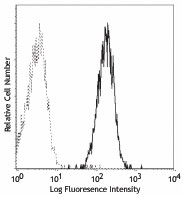
-

Daudi (human B Burkitt's lymphoma cell line) cells stained with 2D10 PE
CD80, also known as B7-1, B7, and BB1, is a 60 kD single chain type I glycoprotein belonging to the immunoglobulin superfamily. CD80 is expressed on activated B and T cells, macrophages, and dendritic cells. CD80 binds to CD28 and CD152 (CTLA-4). Along with CD86, CD80 plays a critical role in regulation of T cell activation. The interaction of CD80 with CD28 provides a potent costimulatory signal for T cell activation through the CD3 complex, while its interaction with CTLA-4 provides an inhibitory signal for T cell activation.
Product DetailsProduct Details
- Verified Reactivity
- Human
- Reported Reactivity
- Rhesus
- Antibody Type
- Monoclonal
- Host Species
- Mouse
- Formulation
- Phosphate-buffered solution, pH 7.2, containing 0.09% sodium azide.
- Preparation
- The antibody was purified by affinity chromatography, and conjugated with biotin under optimal conditions.
- Concentration
- 0.5 mg/ml
- Storage & Handling
- The antibody solution should be stored undiluted between 2°C and 8°C. Do not freeze.
- Application
-
FC - Quality tested
- Recommended Usage
-
Each lot of this antibody is quality control tested by immunofluorescent staining with flow cytometric analysis. For flow cytometric staining, the suggested use of this reagent is ≤1.0 µg per million cells in 100 µl volume. It is recommended that the reagent be titrated for optimal performance for each application.
- Application Notes
-
Additional reported applications (for the relevant formats) include: in vitro blocking of T cell activation, immunohistochemical staining of acetone-fixed frozen tissue sections2, immunoprecipitation, and Western blotting3. The Ultra-LEAF™ purified antibody (Endotoxin <0.1 EU/µg, Azide-Free, 0.2 µm filtered) is recommended for functional assays (Cat. Nos. 305245 & 305246).
-
Application References
(PubMed link indicates BioLegend citation) -
- Kishimoto T, et al. Eds. 1997. Leucocyte Typing VI. Garland Publishing Inc. London.
- Battifora M. 1998. J. Clin. Endocr. Metab. 83:4130. (IHC)
- Van der Merwe PA, et al. 1997. J. Exp. Med. 185:3. (WB)
- Jayakumar A, et al. 2008. Infect. Immun. 76:2138. PubMed
- Schubert DA, et al. 2012. J. Exp Med. 209:335. PubMed
- Wen T, et al. 2014. J Immunol. 192:5481. PubMed
- Product Citations
-
- RRID
-
AB_314500 (BioLegend Cat. No. 305204)
Antigen Details
- Structure
- Ig superfamily, type I transmembrane glycoprotein, 60 kD
- Distribution
-
Activated B cells and T cells, macrophages, and dendritic cells
- Function
- T cell costimulation
- Ligand/Receptor
- CD28, CD152 (CTLA-4)
- Cell Type
- B cells, Dendritic cells, Macrophages, T cells, Tregs
- Biology Area
- Cell Biology, Costimulatory Molecules, Immunology, Neuroscience, Neuroscience Cell Markers
- Molecular Family
- CD Molecules, Immune Checkpoint Receptors
- Antigen References
-
1. Freeman G, et al. 1991. J. Exp. Med. 174:625.
2. Linsley P, et al. 1996. Immunity 4:535.
3. Linsley P, et al. 1991. J. Exp. Med. 174:561. - Gene ID
- 941 View all products for this Gene ID
- UniProt
- View information about CD80 on UniProt.org
Related FAQs
- How many biotin molecules are per antibody structure?
- We don't routinely measure the number of biotins with our antibody products but the number of biotin molecules range from 3-6 molecules per antibody.
Other Formats
View All CD80 Reagents Request Custom Conjugation| Description | Clone | Applications |
|---|---|---|
| Biotin anti-human CD80 | 2D10 | FC |
| FITC anti-human CD80 | 2D10 | FC |
| PE anti-human CD80 | 2D10 | FC |
| PE/Cyanine5 anti-human CD80 | 2D10 | FC |
| Purified anti-human CD80 | 2D10 | FC,WB,IP,IHC-F |
| Alexa Fluor® 488 anti-human CD80 | 2D10 | FC |
| Alexa Fluor® 647 anti-human CD80 | 2D10 | FC |
| PE/Cyanine7 anti-human CD80 | 2D10 | FC |
| APC anti-human CD80 | 2D10 | FC |
| Brilliant Violet 650™ anti-human CD80 | 2D10 | FC |
| Brilliant Violet 421™ anti-human CD80 | 2D10 | FC |
| Brilliant Violet 605™ anti-human CD80 | 2D10 | FC |
| PE/Dazzle™ 594 anti-human CD80 | 2D10 | FC |
| PerCP/Cyanine5.5 anti-human CD80 | 2D10 | FC |
| Brilliant Violet 510™ anti-human CD80 | 2D10 | FC |
| Brilliant Violet 711™ anti-human CD80 | 2D10 | FC |
| Brilliant Violet 785™ anti-human CD80 | 2D10 | FC |
| TotalSeq™-A0005 anti-human CD80 | 2D10 | PG |
| TotalSeq™-B0005 anti-human CD80 | 2D10 | PG |
| TotalSeq™-C0005 anti-human CD80 | 2D10 | PG |
| Ultra-LEAF™ Purified anti-human CD80 | 2D10 | FC,IP,WB,IHC-F |
| Brilliant Violet 750™ anti-human CD80 | 2D10 | FC |
| TotalSeq™-D0005 anti-human CD80 | 2D10 | PG |
Customers Also Purchased
Compare Data Across All Formats
This data display is provided for general comparisons between formats.
Your actual data may vary due to variations in samples, target cells, instruments and their settings, staining conditions, and other factors.
If you need assistance with selecting the best format contact our expert technical support team.
-
Biotin anti-human CD80
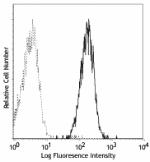
Daudi (human B Burkitt's lymphoma cell line) cells stained w... -
FITC anti-human CD80
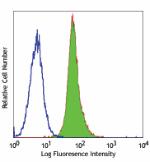
Human B-cell Burkitt's lymphoma cell line Daudi stained with... -
PE anti-human CD80
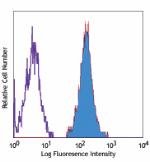
Human B-cell Burkitt's lymphoma cell line Daudi stained with... -
PE/Cyanine5 anti-human CD80

-
Purified anti-human CD80

Daudi (human B Burkitt's lymphoma cell line) cells stained w... -
Alexa Fluor® 488 anti-human CD80
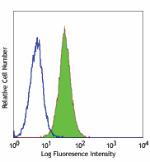
Human B-cell Burkitt's lymphoma cell line Daudi stained with... -
Alexa Fluor® 647 anti-human CD80

Human B-cell Burkitt's lymphoma cell line Daudi stained with... -
PE/Cyanine7 anti-human CD80
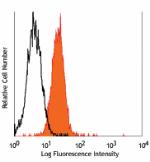
Human B-cell Burkitt's lymphoma cell line Raji stained ... -
APC anti-human CD80
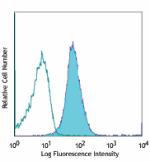
Daudi (human B Burkitt's lymphoma cell line) cells stain... -
Brilliant Violet 650™ anti-human CD80

Human B-cell Burkitt's lymphoma cell line, Raji was stained ... -
Brilliant Violet 421™ anti-human CD80
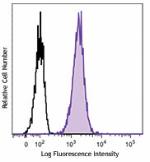
Human B-cell Burkitt's lymphoma cell line Raji was stained w... -
Brilliant Violet 605™ anti-human CD80

Human B-cell Burkitt's lymphoma cell line Raji was stained w... -
PE/Dazzle™ 594 anti-human CD80
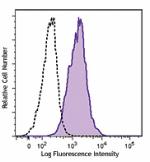
Human B-cell Burkitt's lymphoma cell line Raji was stained w... -
PerCP/Cyanine5.5 anti-human CD80

Human B-cell Burkitt's lymphoma cell line Raji was stai... -
Brilliant Violet 510™ anti-human CD80

Human B-cell Burkitt's lymphoma cell line, Raji was stained ... -
Brilliant Violet 711™ anti-human CD80
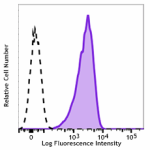
Human B-cell Burkitt's lymphoma cell line Raji was stained w... -
Brilliant Violet 785™ anti-human CD80

Human B-cell Burkitt's lymphoma cell line Raji was stained w... -
TotalSeq™-A0005 anti-human CD80
-
TotalSeq™-B0005 anti-human CD80
-
TotalSeq™-C0005 anti-human CD80
-
Ultra-LEAF™ Purified anti-human CD80

Daudi (human B Burkitt's lymphoma cell line) cells stained w... -
Brilliant Violet 750™ anti-human CD80
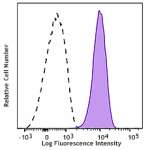
Human B-cell Burkitt's lymphoma cell line Raji was stained w... -
TotalSeq™-D0005 anti-human CD80








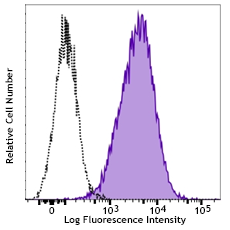

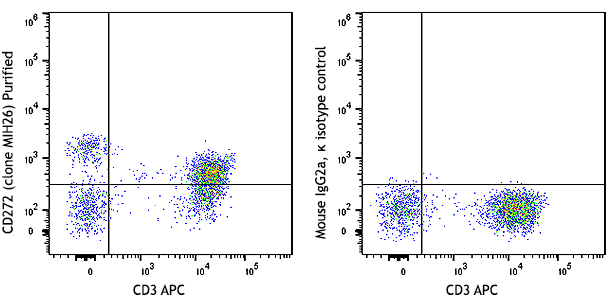



Follow Us